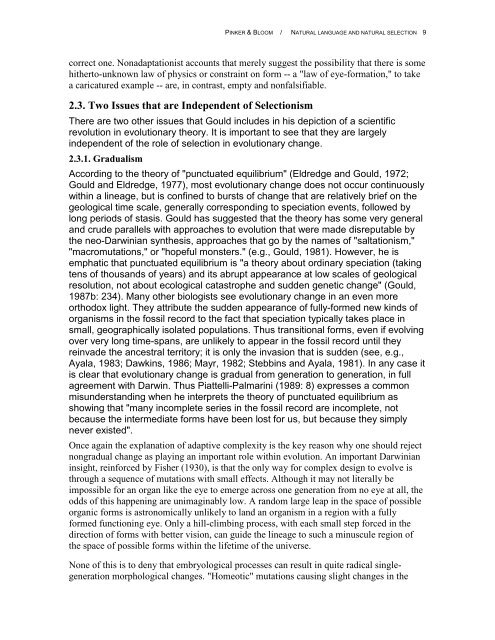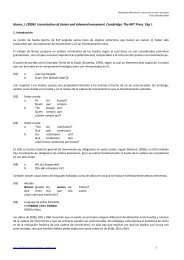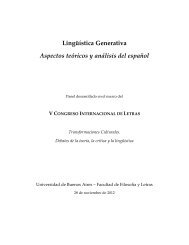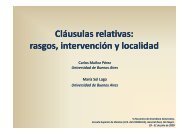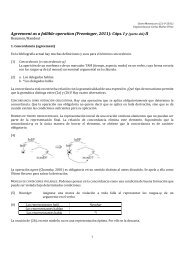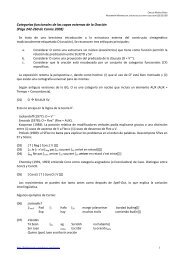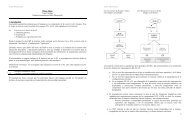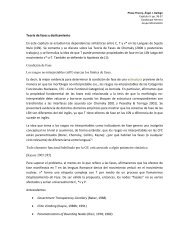Pinker - Bloom - NATURAL LANGUAGE AND NATURAL SELECTION
Pinker - Bloom - NATURAL LANGUAGE AND NATURAL SELECTION
Pinker - Bloom - NATURAL LANGUAGE AND NATURAL SELECTION
Create successful ePaper yourself
Turn your PDF publications into a flip-book with our unique Google optimized e-Paper software.
PINKER & BLOOM / <strong>NATURAL</strong> <strong>LANGUAGE</strong> <strong>AND</strong> <strong>NATURAL</strong> <strong>SELECTION</strong> 9<br />
correct one. Nonadaptationist accounts that merely suggest the possibility that there is some<br />
hitherto-unknown law of physics or constraint on form -- a "law of eye-formation," to take<br />
a caricatured example -- are, in contrast, empty and nonfalsifiable.<br />
2.3. Two Issues that are Independent of Selectionism<br />
There are two other issues that Gould includes in his depiction of a scientific<br />
revolution in evolutionary theory. It is important to see that they are largely<br />
independent of the role of selection in evolutionary change.<br />
2.3.1. Gradualism<br />
According to the theory of "punctuated equilibrium" (Eldredge and Gould, 1972;<br />
Gould and Eldredge, 1977), most evolutionary change does not occur continuously<br />
within a lineage, but is confined to bursts of change that are relatively brief on the<br />
geological time scale, generally corresponding to speciation events, followed by<br />
long periods of stasis. Gould has suggested that the theory has some very general<br />
and crude parallels with approaches to evolution that were made disreputable by<br />
the neo-Darwinian synthesis, approaches that go by the names of "saltationism,"<br />
"macromutations," or "hopeful monsters." (e.g., Gould, 1981). However, he is<br />
emphatic that punctuated equilibrium is "a theory about ordinary speciation (taking<br />
tens of thousands of years) and its abrupt appearance at low scales of geological<br />
resolution, not about ecological catastrophe and sudden genetic change" (Gould,<br />
1987b: 234). Many other biologists see evolutionary change in an even more<br />
orthodox light. They attribute the sudden appearance of fully-formed new kinds of<br />
organisms in the fossil record to the fact that speciation typically takes place in<br />
small, geographically isolated populations. Thus transitional forms, even if evolving<br />
over very long time-spans, are unlikely to appear in the fossil record until they<br />
reinvade the ancestral territory; it is only the invasion that is sudden (see, e.g.,<br />
Ayala, 1983; Dawkins, 1986; Mayr, 1982; Stebbins and Ayala, 1981). In any case it<br />
is clear that evolutionary change is gradual from generation to generation, in full<br />
agreement with Darwin. Thus Piattelli-Palmarini (1989: 8) expresses a common<br />
misunderstanding when he interprets the theory of punctuated equilibrium as<br />
showing that "many incomplete series in the fossil record are incomplete, not<br />
because the intermediate forms have been lost for us, but because they simply<br />
never existed".<br />
Once again the explanation of adaptive complexity is the key reason why one should reject<br />
nongradual change as playing an important role within evolution. An important Darwinian<br />
insight, reinforced by Fisher (1930), is that the only way for complex design to evolve is<br />
through a sequence of mutations with small effects. Although it may not literally be<br />
impossible for an organ like the eye to emerge across one generation from no eye at all, the<br />
odds of this happening are unimaginably low. A random large leap in the space of possible<br />
organic forms is astronomically unlikely to land an organism in a region with a fully<br />
formed functioning eye. Only a hill-climbing process, with each small step forced in the<br />
direction of forms with better vision, can guide the lineage to such a minuscule region of<br />
the space of possible forms within the lifetime of the universe.<br />
None of this is to deny that embryological processes can result in quite radical singlegeneration<br />
morphological changes. "Homeotic" mutations causing slight changes in the


